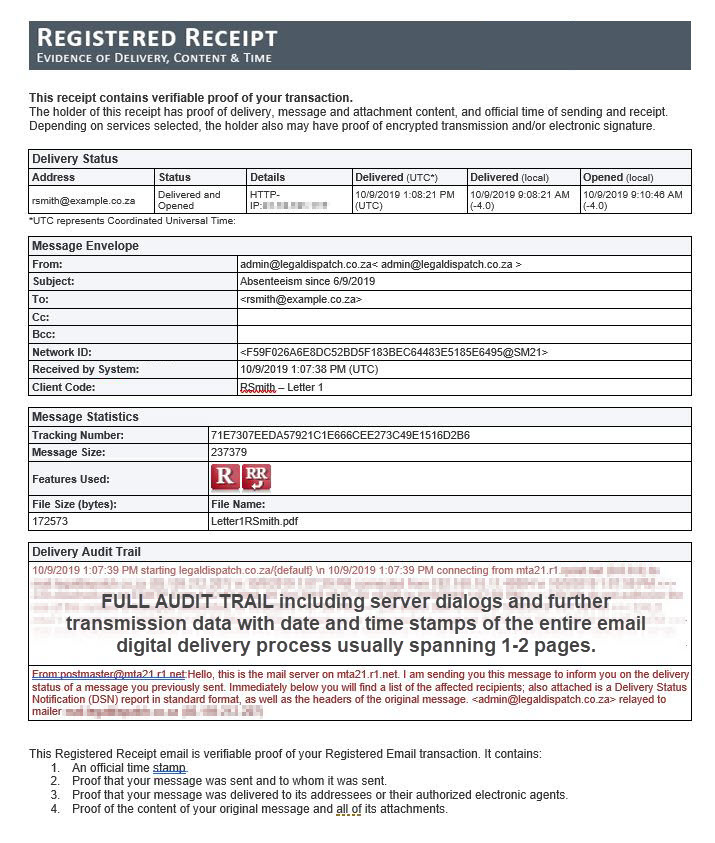REGISTERED EMAIL EXPLAINED
- Registered Email Provides Proof of Sending, Proof of Delivery, Proof of Content and Proof of Time Sent and Received.
- Neither the sender or the recipient requires any special software installed. Simply send your email online from our website and your proof will be emailed to you.
- 3rd Party authentication ensures integrity of information and can be easily verified by forwarding the registered receipt to ensure it has not been tampered with.
- Typical applications include Absconsion or Desertion Notices to Employees, Letters of Demand, Notification of a Change in Terms and Conditions of Existing Contracts, Delivery of Certificates or Reports, Notification of Deadlines or Notification of Eviction.
Evidence of Delivery, Content & Time
For every registered email sent, you will receive a Registered Receipt within a maximum of 2 hours. After Registered Receipt email generation, tracking continues for up to 30 days from the time the original message was received by the system for processing. Tracking reply association continues for up to 30 days from time the original message was received by the system for processing.
The Registered Receipt contains evidence for delivery and delivery status.
The Annex “HTMLReceipt” contains the actual delivery receipt. This file consists of the original email including all attachments in encrypted and digitally signed form, the facts of the delivery (audit trail), proof of delivery, digital fingerprints and the respective time information.
Delivery Status
The Registered Receipt also contains the delivery status. If the message has not been received and opened by the recipient before the receipt has been sent, the sender will be informed about the opening of the message by a read confirmation.
Delivery failures could include a bad email address, full mailbox, email server down or non-existent email address.
Easy Email Encryption (Auto TLS with password fallback)
The integrated email encryption – in combination with the unique Registered Receipt protects you as the sender against claims for damages associated to possible data protection breaches. You send your emails encrypted and have proof that your email arrived encrypted at the recipient.

